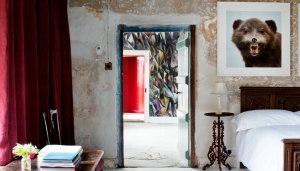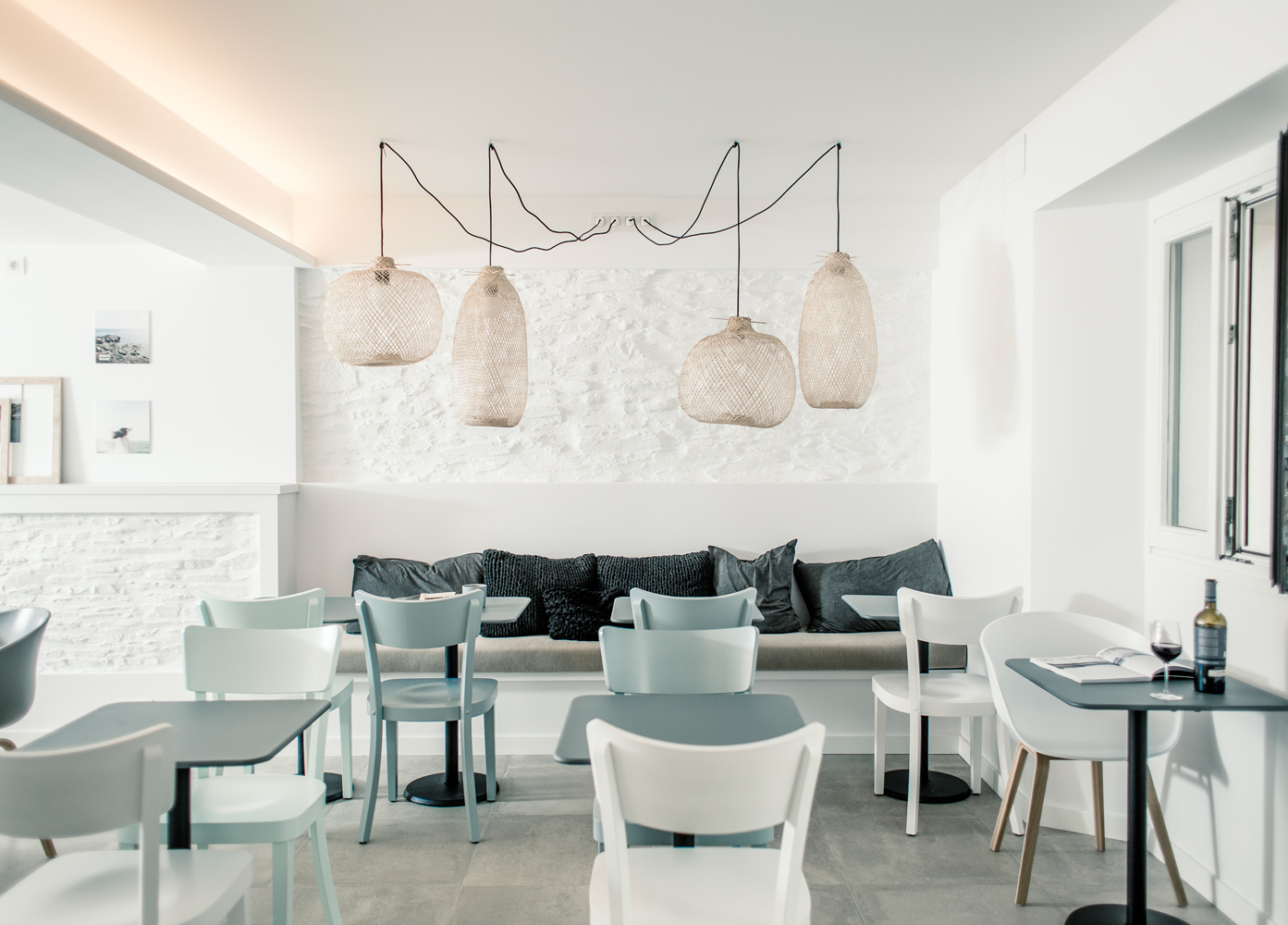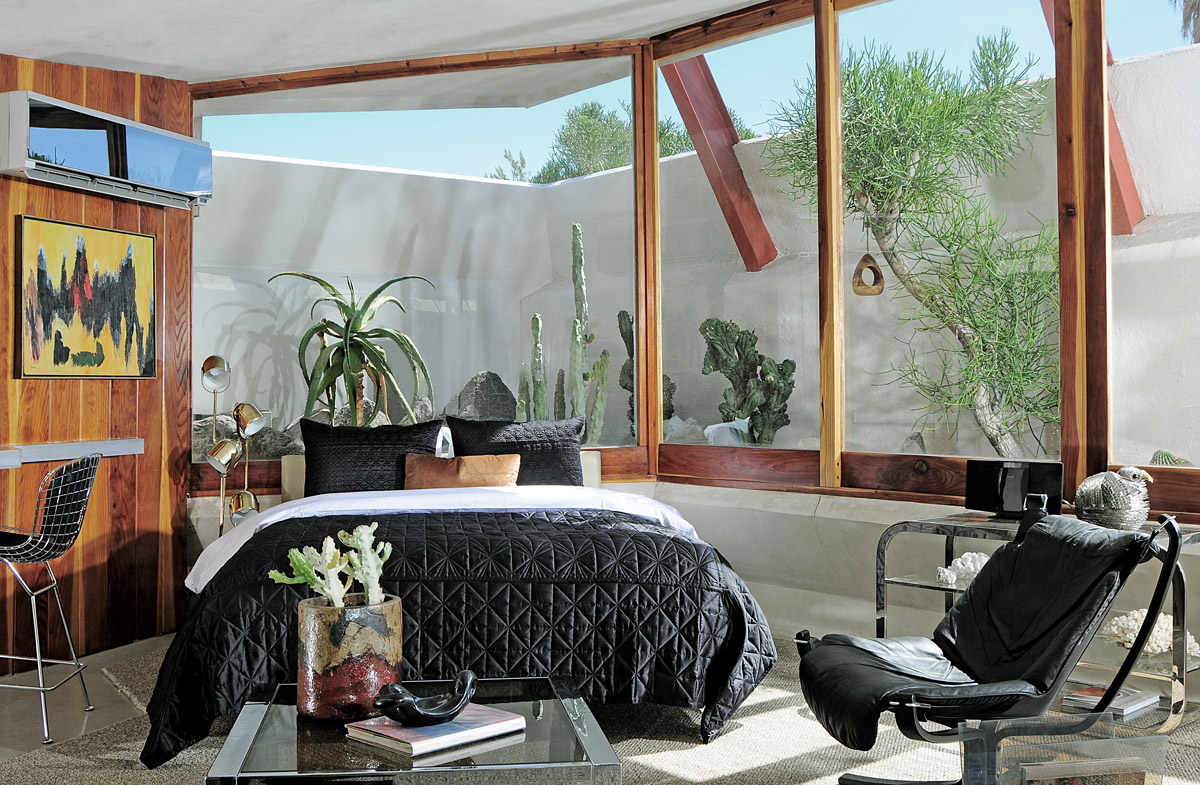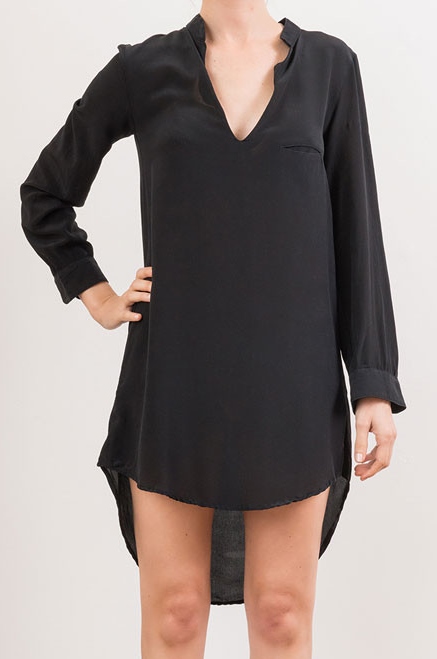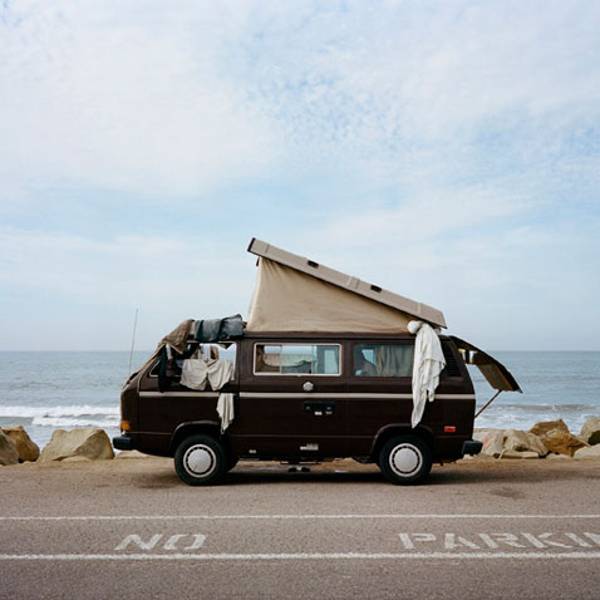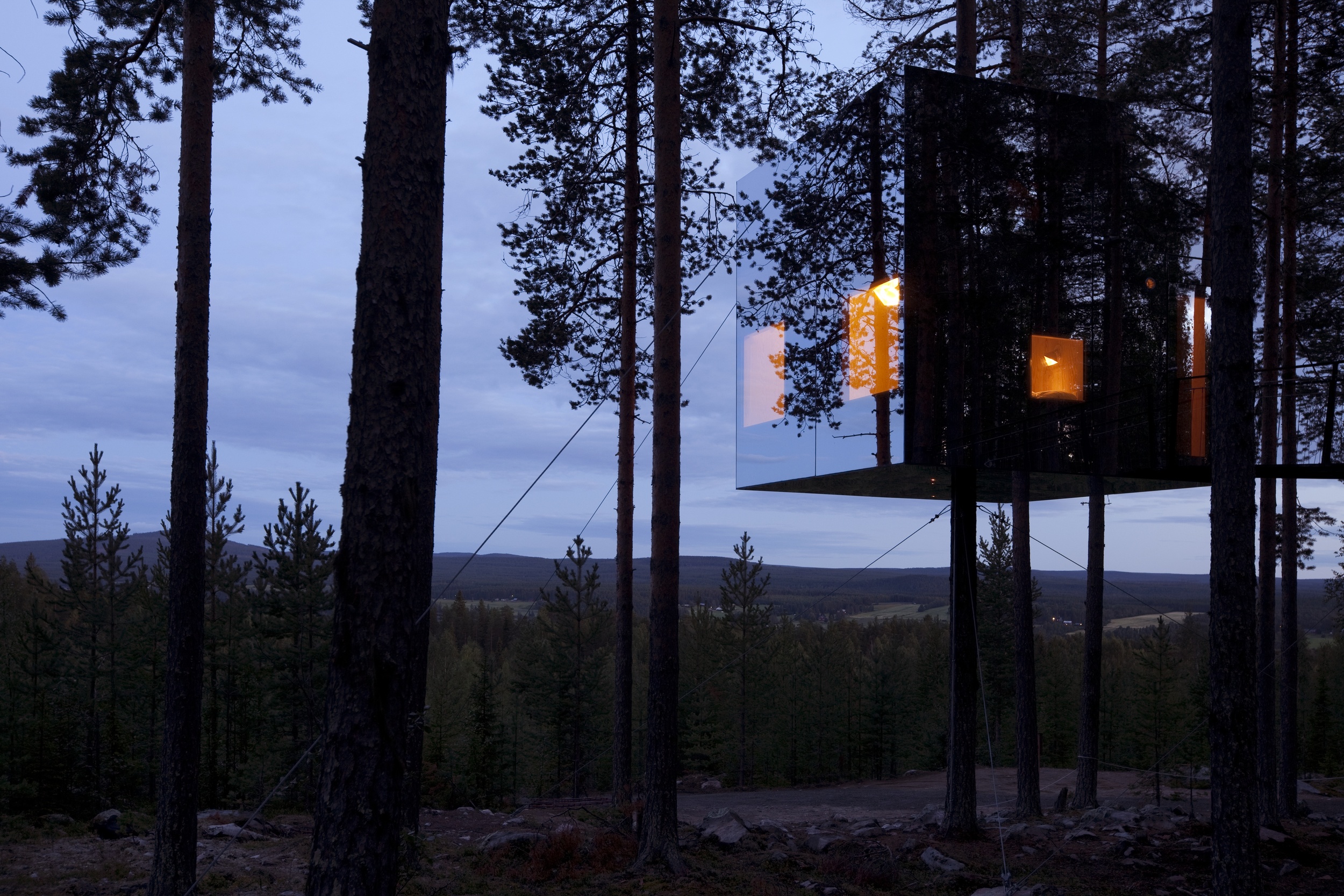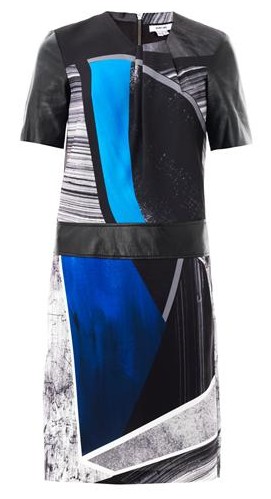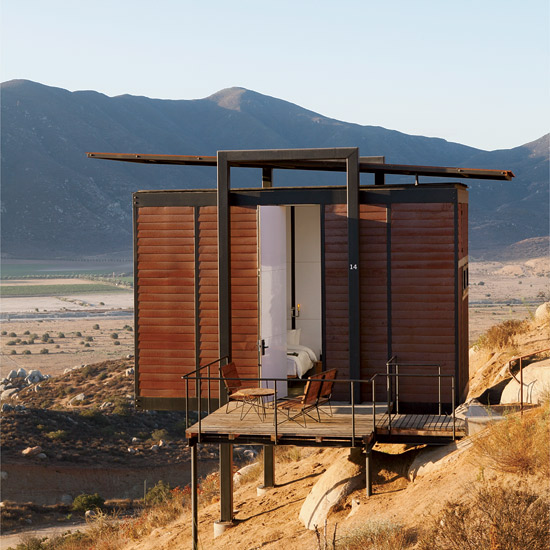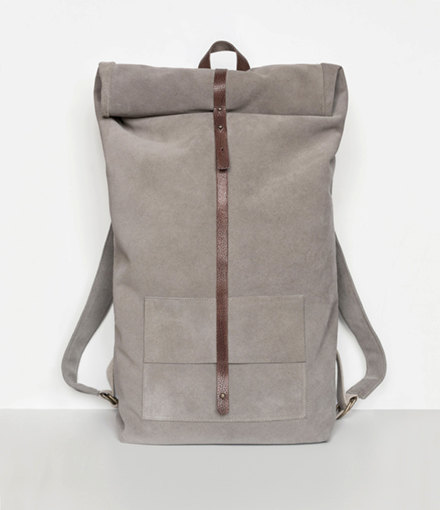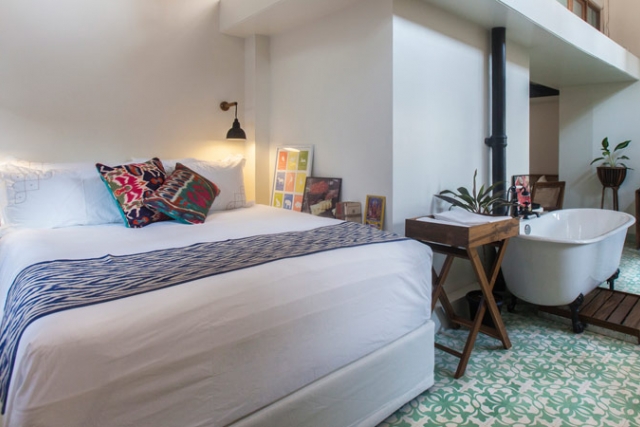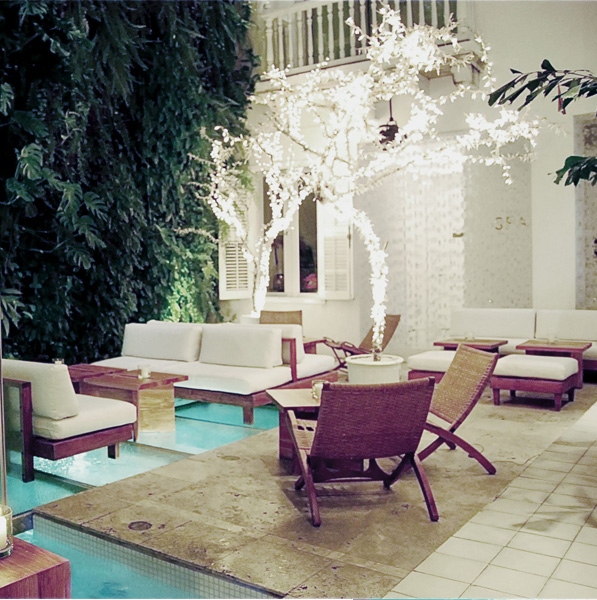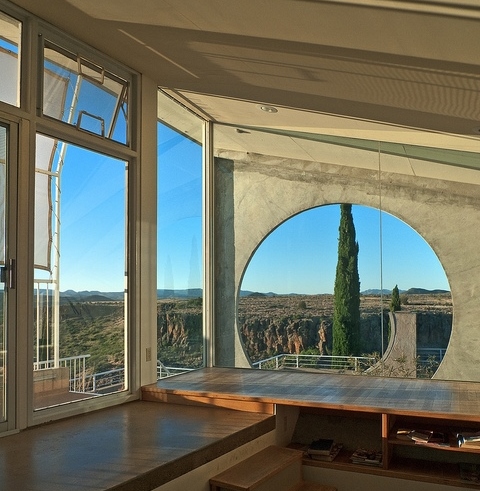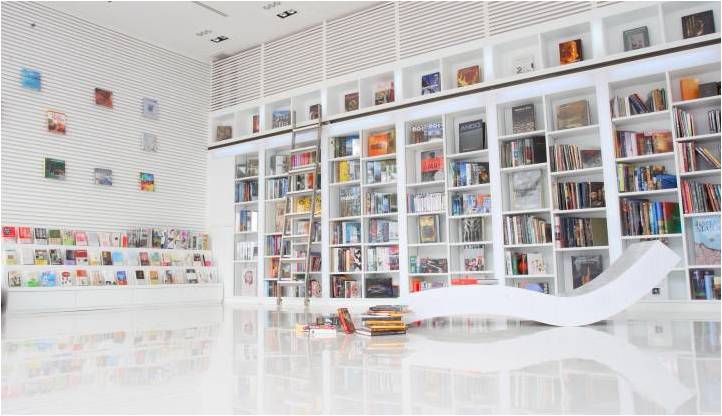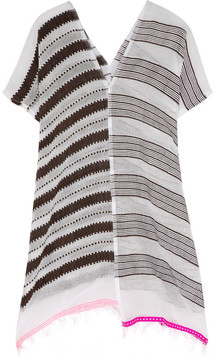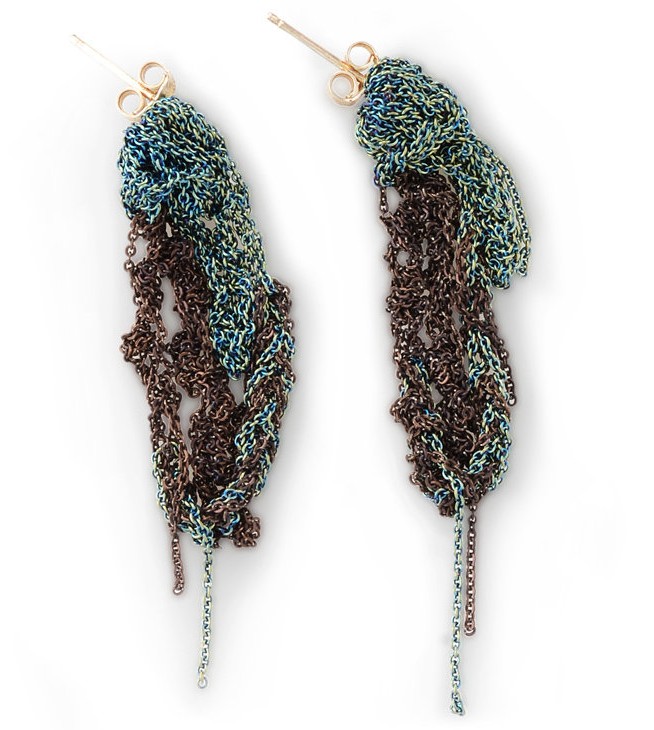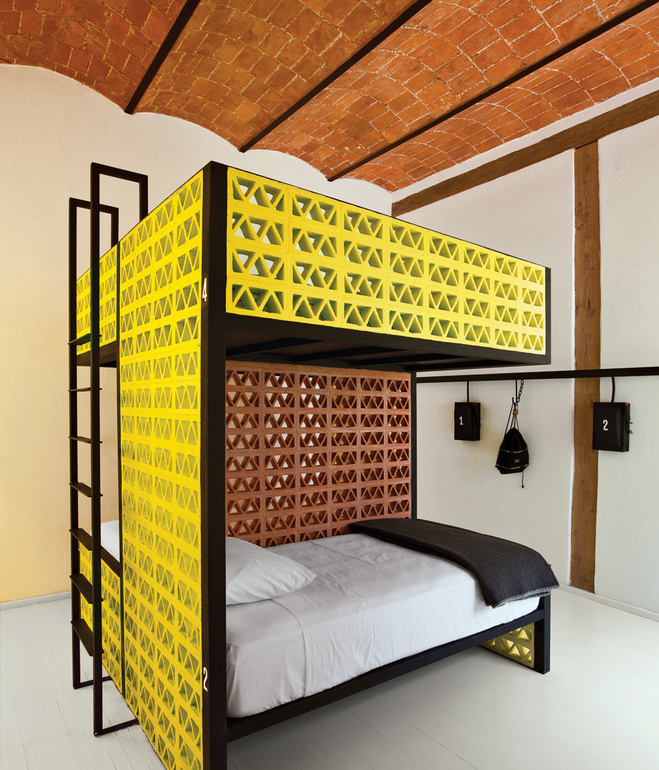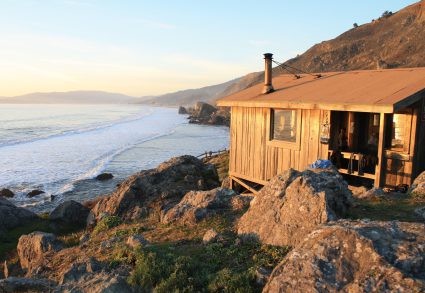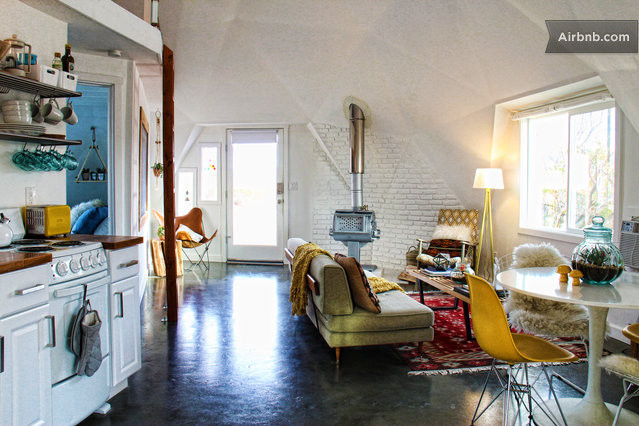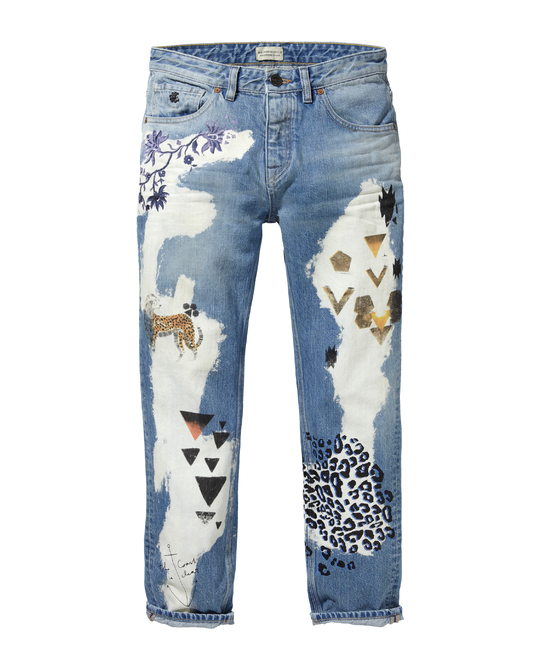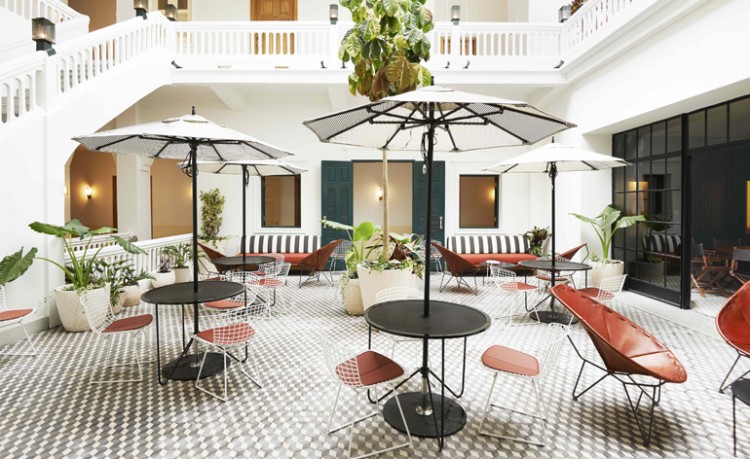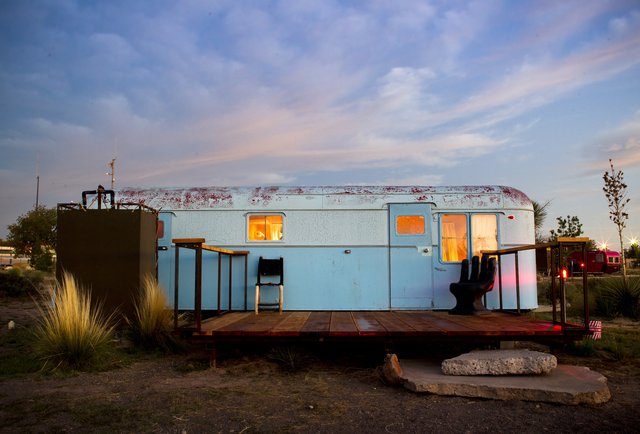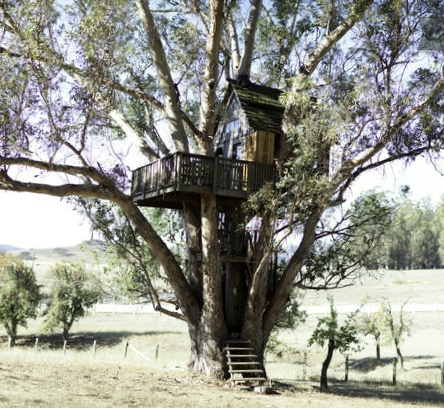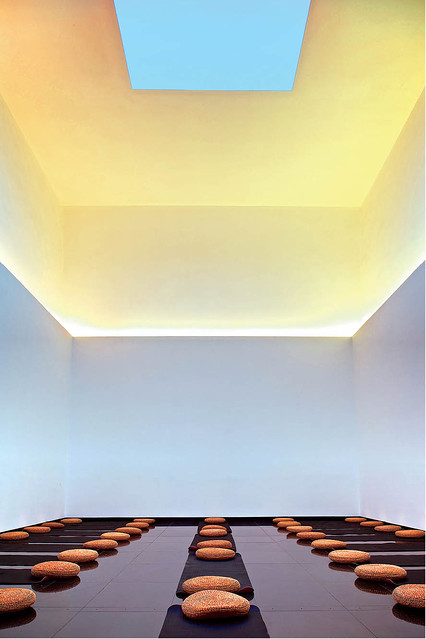Avant outpost
One hundred acres as canvas: a contemporary art powerhouse has reimagined a centuries-old farm in rural England into a campus for experiencing art and architecture, antiquity and avant garde, in situ. In a bold move away from urban markets, Hauser & Wirth decided to add Durslade in Somerset to its holdings (joining galleries in Zurich, New York, Los Angeles and London). As derelict as it was historic, the farm (perhaps familiar as the set of “Chocolat” starring Johnny Depp and Juliette Binoche) has taken two years to transform: to resuscitate buildings (including my favorite, the Piggery), add galleries, carve out courtyards, concept a restaurant, landscape the grounds (the doing of Piet Oudolf, High Line designer). Deliberate juxtapositions of old and new abound. In the central Farmhouse, restored fixtures and vintage furniture share space with commissioned work by the gallery’s artists: Argentine Guillermo Kuitca filled all four walls of the dining room with a fractal mural (glimpsed from a downstairs bedroom; when not occupied by private guests of the gallery, the Farmhouse’s six bedrooms welcome reservations). On July 15, Hauser & Wirth Somerset will officially open with an exhibition of new work by Phyllida Barlow. The British artist channeled inspiration from Durslade and its surrounds into color-rich, ragged assemblies; for my part, I would express the farm-gallery binary in this Suno mash-up of country plaid and geometric pattern.
